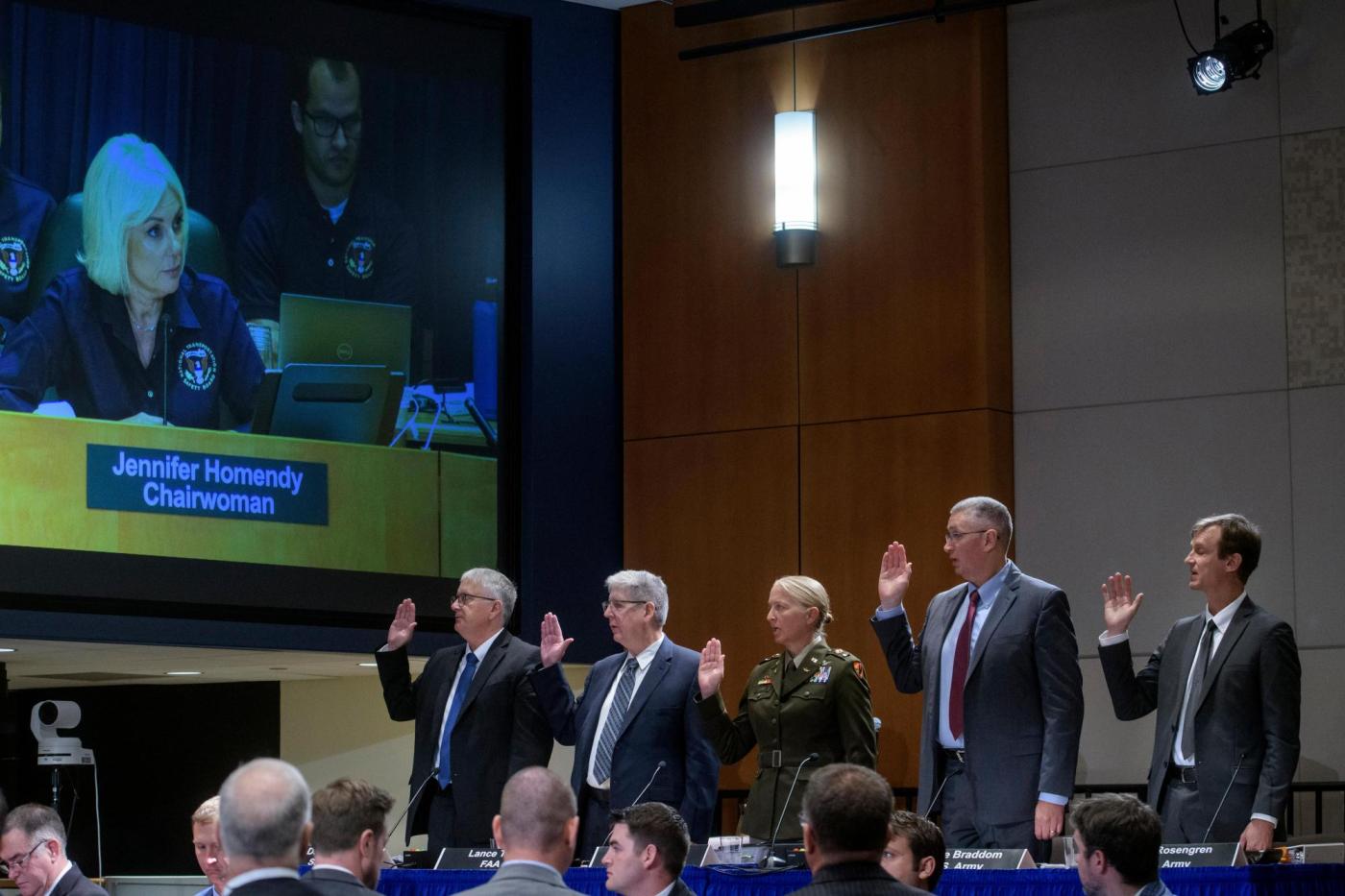A high-stakes federal investigation is peeling back layers of a fatal midair collision, revealing critical insights into aviation safety protocols and the complex challenges of managing crowded airspace. The National Transportation Safety Board (NTSB) has commenced its second day of public hearings, meticulously examining the January incident involving an Army Black Hawk helicopter and a commercial passenger plane, an event that has underscored long-standing concerns within the aviation community. This deep dive aims to uncover the root causes and prevent future tragedies, focusing keenly on the intricate dynamics of air traffic control and pilot responsibilities.
Key factors emerging from the NTSB hearing include persistent worries about military helicopters operating in congested zones and significant understaffing issues among federal aviation workers. Investigators are scrutinizing how these systemic problems may have contributed to the tragic midair collision. The testimony revealed a prevalent reliance on visual separation by pilots, a practice where aircraft operators depend on their eyesight to maintain safe distances, even in dense airspace like that surrounding Washington D.C.’s Ronald Reagan National Airport.
Disturbing accounts surfaced regarding the difficulty of identifying other aircraft, particularly at night, and concerns over onboard locator systems being routinely switched off by Army choppers. Rick Dressler, an official with Metro Aviation and a former Army aviator, vocally expressed his and other civilian helicopter pilots’ discomfort with military operations near Reagan airport. He emphasized the severe challenges posed by such practices, highlighting a lack of adequate separation in a highly constrained airspace.
The collision tragically stands as the nation’s deadliest plane crash since 2001 and the first of its kind this year, despite overall statistics still affirming flying as a remarkably safe mode of transportation. Investigations show that while the Black Hawk pilots twice affirmed having the passenger plane in sight and agreed to maintain distance, a critical instruction to “pass behind” the jet was unheard due to the helicopter’s microphone key being pressed at the moment of transmission. This communication breakdown proved to be a pivotal factor in the unfolding disaster.
Further compounding the complexity, the helicopter’s instructor pilot attempted a maneuver just before impact, but it remains unclear if there was sufficient time to avert the crash. Families of the victims, like Ashleigh Stovall and Gwen Duggins, listened emotionally to the proceedings, with audio of flight radio transmissions painting a somber picture. Their presence underscored the profound human cost of the midair collision and the urgent need for accountability and reform in commercial aviation and military flight operations.
Bryan Lehman, a veteran FAA employee, testified that the agency must significantly improve its responsiveness to safety concerns, revealing he had sent a detailed memo in 2023 urging reduced flights at Reagan airport, an issue that was subsequently dropped. His testimony, alongside others, highlighted a concerning pattern of ignored warnings that predated the Potomac River tragedy. NTSB Chairwoman Jennifer Homendy repeatedly reminded witnesses of their whistleblower protections, signaling the gravity of the testimony being sought during the aviation investigation.
In a fiery exchange, Homendy passionately urged the FAA to “Fix it. Do better,” specifically calling out ignored warnings from years prior. She also pressed for the Army to formalize a policy preventing helicopter pilots from flying under landing planes, a practice that investigators learned was routine. This directive emphasizes a proactive approach to air safety and addresses systemic vulnerabilities identified throughout the NTSB hearing process.
Victims’ loved ones, like Ben Shtuhl, whose longtime girlfriend perished, voiced their hope for accountability and meaningful reforms but sensed a distressing lack of urgency, particularly from the FAA. Shtuhl’s concerns include the Black Hawk’s elevation beyond its prescribed limit and its deviation from the safer east bank of the Potomac River, highlighting critical operational discrepancies that likely contributed to the helicopter crash. These questions remain central to understanding the full scope of the tragedy and ensuring comprehensive changes.
Investigative data further revealed the helicopter was flying 80 to 100 feet higher than its barometric altimeter indicated, a significant discrepancy that could have profoundly impacted spatial awareness and safe flight operations in a crowded corridor. This technical detail, combined with human factors and communication lapses, paints a complex picture of the events leading up to the fatal midair collision. The ongoing probe aims to integrate all these findings into a comprehensive report, striving to prevent similar aviation incidents in the future and bolster overall air safety standards.






Leave a Reply